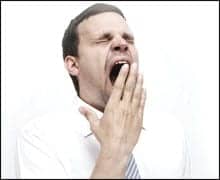Day after day, reports are broadcast about the declining health of the US economy. In an April 2 outlook on the US financial system, Ben Bernanke, Chairman of the Board of Governors of the Federal Reserve System, gave a bleak analysis, stating that credit availability has been restricted, private payroll employment has declined, and inflation is a source of concern. Markets such as construction and domestic automaking have hit bumpy roads, but what about health care and the sleep industry? Will sleep labs continue to expand? Will there be security in the job market?
Reports are finding that during this economic downturn, the health care job market is expected to be somewhat immune to the perils of slow growth. “In an environment of a sluggish economy and rising unemployment, analysts said there will be some safe harbors where job demand will keep growing,” states an article appearing in The Mercury News on April 7, 2008. “First and foremost in this group will be health care, where the demographics of an aging population mean the demands for medical care will keep rising.” An aging population, coupled with the enormous undiagnosed population of obstructive sleep apnea patients, spells increased demand for sleep services, making for an optimistic job market outlook for sleep medicine professionals.
With the patient population to support the practice of sleep medicine, why, in a recent Wachovia report, was sleep lab expansion forecast to slow? The report suspects that the uncertainty brought by the Centers for Medicare and Medicaid Services decision to reimburse for CPAP based on an home test has sparked a wait-and-see approach to growth. A number of theories about the impact home testing will have on sleep labs have been proposed, one of which predicts that with home test reimbursement changes, more patients can be diagnosed, thus supporting the financial growth of sleep labs. Another projection speculates that if home testing becomes the dominant testing modality, then the difference in reimbursement between home testing and in-lab PSG will financially hurt sleep labs. While sleep industry professionals wait to see what effect the decision will have—a transition time of 12 to 18 months by Wachovia estimates—a lull in lab growth is anticipated. The Q1 2008 Wachovia report finds that lab bed capacity is expected to grow by 13% in the next 12 months compared to a 29% growth rate in the previous 12 months.
Although the economy is losing strength, jobs in health care look secure, and despite the uncertainty created by home testing, sleep lab bed capacity is still projected to grow. As you formulate your plans and evaluate your approach to business, Sleep Review is here to provide information and analysis. The 2008 Buyer’s Guide and online Buyer’s Guide is one tool to help you be sure that you have the necessary information about the products essential to continue your success.
—Franklin A. Holman
[email protected]




